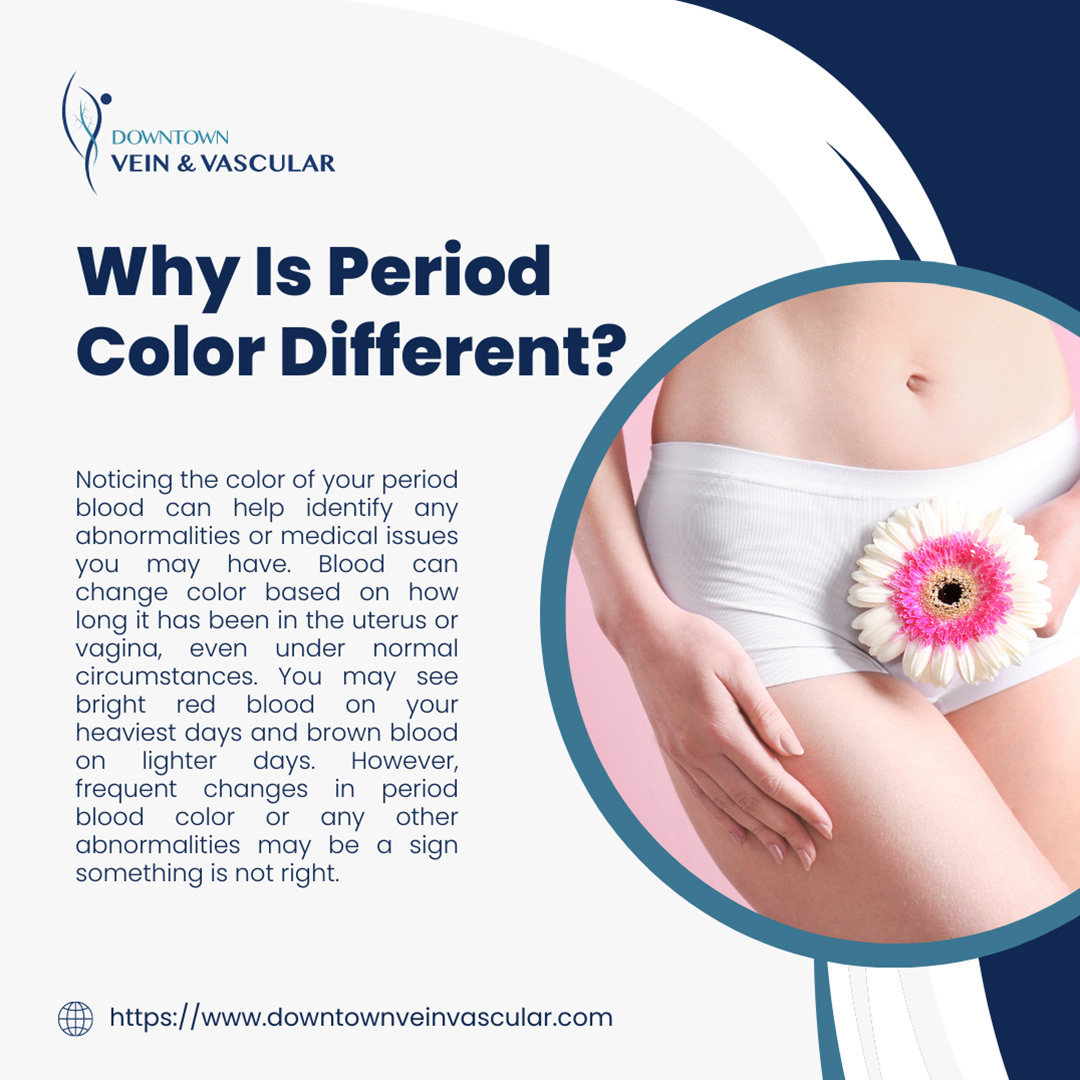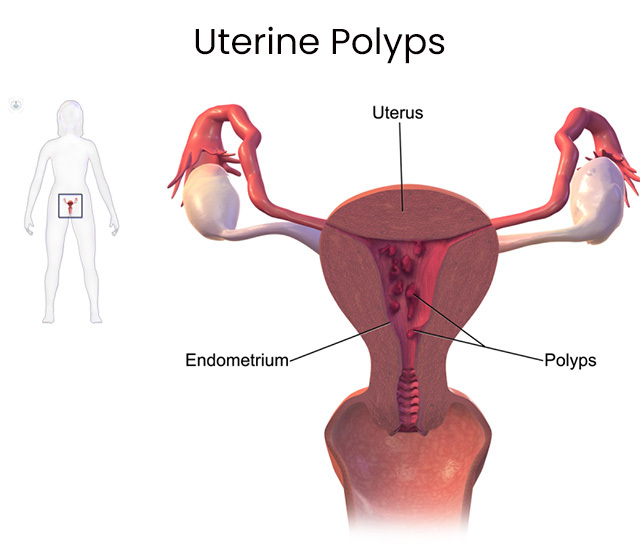Are you noticing a pink-colored discharge during your period or even after it has ended? While vaginal discharge is part of a normal monthly cycle, a change in color, amount, or texture could be a sign of a health issue. If you see pink discharge during, after, or before your period, schedule an appointment at Downtown Vein & Vascular Center for expert advice and complete health analysis. Dr. Sergei A. Sobolevsky figures out the possible causes behind pink discharge and recommends the best solutions to fix problems relating to your period.
When you have your period, the uterus sheds its lining. The menstrual blood flows from the uterus through the cervix and passes out of the body, through the vagina. During your period, blood may change color, ranging from deep red to brown and even pink, depending on the flow. Your blood may appear pink at the beginning or end of your period, especially if you are spotting. However, if you continue to have pink-colored discharge or experience pain and other symptoms, it could be a sign of some bigger issue that needs attention.
Period Blood Color – Mid-Cycle Spotting or Menstruation?
Most of the time, our menstruation blood is dark red. It is because it is a mixture of blood and endometrial tissue that has been building up all month long. However, many women also experience discharge even when they are not having periods.
If you notice mid-cycle vaginal discharge, it may be hard to tell if it is your period coming early or the usual discharge. If you are spotting, the discharge will be less heavy, and it should come and go, instead of lasting for a few days. Paying attention to the color of your menstruation can help you get a better idea of what is happening.
Read more: What Every Woman Should Know About Pelvic Cramping After Sex
Why Is Period Color Different?
Noticing the color of your period blood can help identify any abnormalities or medical issues you may have. Blood can change color based on how long it has been in the uterus or vagina, even under normal circumstances. You may see bright red blood on your heaviest days and brown blood on lighter days. However, frequent changes in period blood color or any other abnormalities may be a sign something is not right.
You may notice different colors if you have irregular periods. Blood changes color as it oxidizes or reacts with the oxygen in your body. As you see the different colors, you also need to understand what they imply.

When Is It Normal to See Pink Discharge?
There are certain times when you can expect pink discharge and not get worried, as it is completely normal.
They include:
- Spotting at the very start or end of your monthly cycle
- Spotting as you release an egg as the estrogen levels drop at that moment
- Spotting just before ovulation or right after ovulation
- If spotting develops after you ovulate, it could mean you are pregnant, and it is implant bleeding
These are times when spotting and pink discharge are a normal part of the menstrual cycle. However, if you notice too much discharge or if the color of the discharge changes, it may be a sign of an underlying condition. In such a case, it is best to consult your vein doc to ensure it is nothing to worry about.

Vaginal Pink Discharge and Overall Health
Pink-colored vaginal discharge usually contains traces of blood. Bleeding outside of your period could be a warning sign of a problem that needs further investigation. If you are experiencing pink discharge, see your doctor right away for an accurate diagnosis and timely treatment.
The color and posting could indicate any of the following conditions:
- Uterine fibroids – Fibroids are known to cause abnormal bleeding, which includes pink discharge or spotting in between the periods. Fibroids are non-cancerous tumors that develop in or around the uterus. If you are seeing any pink outside of your period, it is best to consult a doctor.
- Uterine polyps – Polyps are also non-cancerous growths that develop in endometrial tissue before extending into the uterus. If you notice pink discharge after sex, it could be a sign that you have polyps as intercourse can pump these growths, and small amounts of blood can mingle with your discharge. Polyps can also cause irregular bleeding, including spotting.
- Ovarian cysts – They are fluid-filled sacs that develop on the ovaries. When these cysts resolve on their own, they usually do not cause symptoms or require any treatment. But, if they keep growing and become large, it can result in abnormal bleeding and pink discharge.
- Infections – Pink discharge may also be a sign of an infection in your vagina, uterus, or cervix. Potential causes could be an STI, sexually transmitted infection, or vaginitis.
- Pregnancy – When a fertilized egg implants itself in the uterine wall, it may cause a little bleeding or pink discharge. However, if that egg implants outside the uterus, in the fallopian tubes, it is likely to result in pink discharge, along with other symptoms like sharp pain, dizziness, weakness, and even fainting.
- Cervical cancer – If you have cervical cancer, the color of your discharge matters less than the change in its nature. Abnormal discharge is a warning sign of cervical cancer, especially if it is watery, smells like fish, or is accompanied by other symptoms of cancer, such as edema or swelling in the leg, abdominal bleeding, painful urination, and overall fatigue.
Pink discharge can indicate many different conditions, and some of them are serious medical issues that need treatment. It is necessary to call your doctor if you notice pink discharge after your period has ended or between your cycle. The only way to learn what is causing it is with further investigation and medical testing.
Read more: 13 Ways to Stop Period Cramps
Pink Period Blood Color – What Does It Mean?
Pink discharge is not a between-periods problem in many cases. Many times during your period, your flow may become thin, and turn light and pale pink instead of red, usually towards the end of the period. Some women also experience a light, pale flow on the first day of their periods, which is nothing serious. A lighter shade may also mean that the period blood has mixed with cervical fluid.
However, there are times when this change in color, from red to pink may indicate a health problem:
- Low levels of estrogen can make your period flow appear more pink than red
- A lighter red or almost diluted flow could be a sign of anemia
As anemia is a side effect of fibroids and abnormal menstrual bleeding, it is a sign you need to see a doctor. You must remember that some of the changes in your discharge or flow may be subtle, and you may not notice them initially. Pay attention to your body’s normal functioning, including your period color, and visit your doctor if you observe something that is not usual.
Do not ignore pink discharge accompanied by severe pain or other symptoms you did not experience before, as it could be an underlying health issue that should be checked.
When to See a Doctor for Pink Discharge?
Pink vaginal discharge is not always a cause for concern, especially if it occurs around the time of your expected period.
However, you must not delay seeing a doctor in case of the following:
- You have symptoms like pain, dizziness, or blood clots
- Your vaginal discharge increases
- You notice pink discharge more frequently
If your period lasts longer than seven days or your vaginal discharge is causing discomfort, you should not take it lightly.
Learn available fibroid treatment options our experts offer:
- Effective management of fibroid pain
- Managament of frequent urination caused by fibroids
- Uterine artery embolization
- Uterine fibroid removal options
Understanding what your period blood color means to your health is essential, and you must not ignore pink discharge as it could be something that needs medical attention. Visit Downtown Vein & Vascular Center to learn more about what changes in vaginal discharge could mean for your overall, as well as uterine health. Doctor Sobolevsky reviews your health history and focuses on your discharge pattern and symptoms to figure out what is causing this discharge and how it can be addressed effectively. He recommends treatment options, customized to your individual needs to ensure this irritating discharge does not affect your quality of life and wellbeing.


